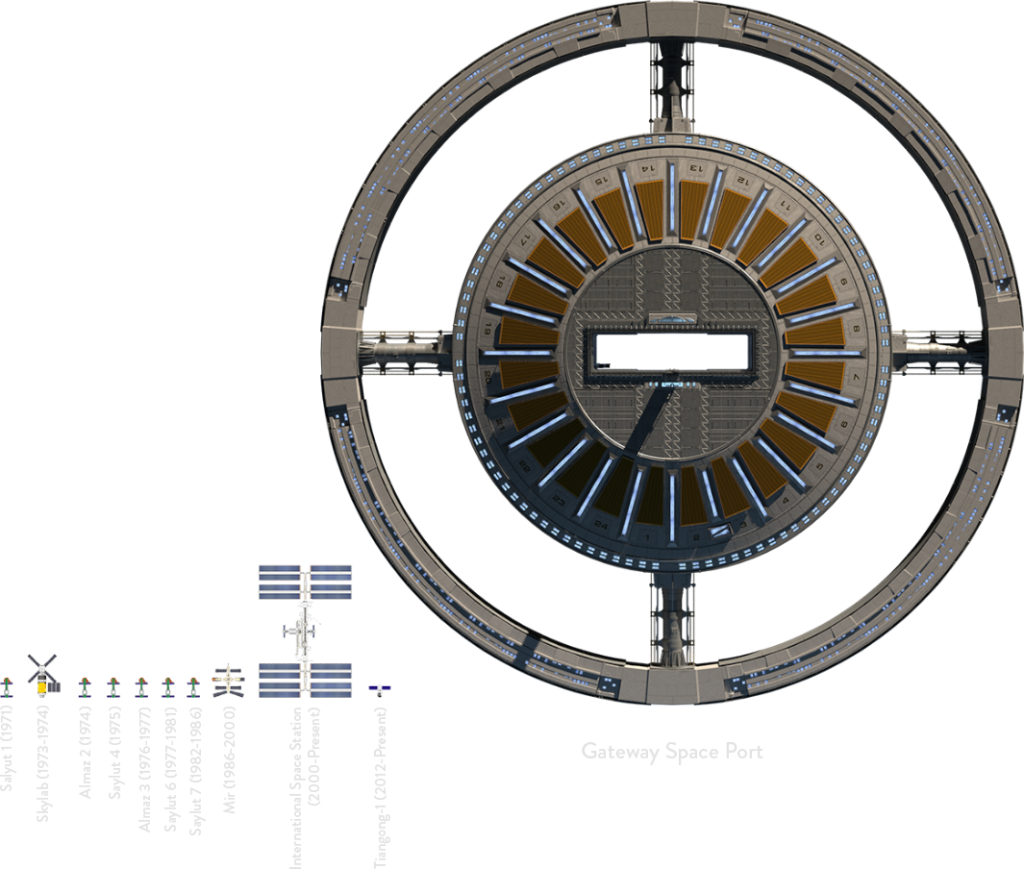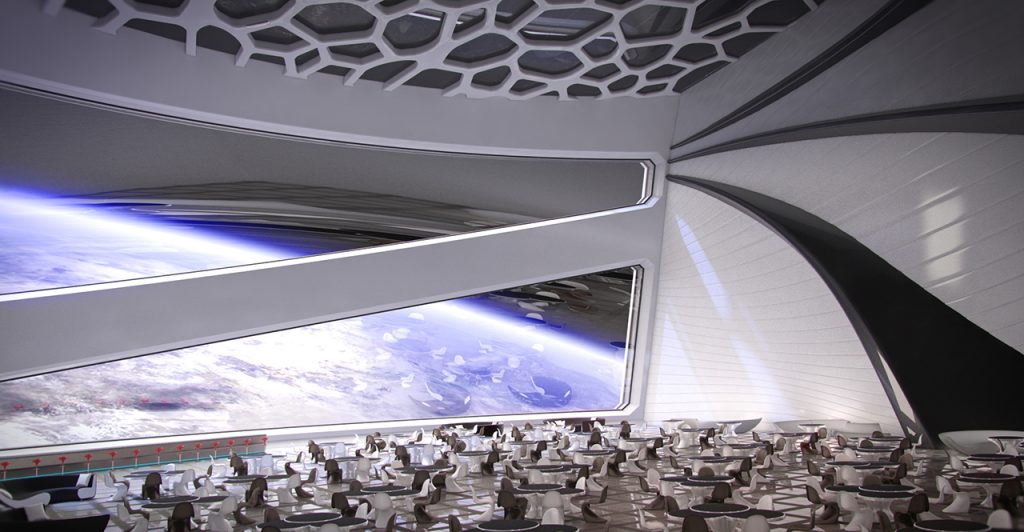The Gateway
You could call it a destination hotel, a low Earth orbit cruise ship, or a city in space with a spaceport. But the best way to understand this complex piece of infrastructure is to look to its namesake: The Gateway.
What is the Gateway
Humankind will explore and colonize our solar system and then reach for the stars. But every time terrestrial travelers will venture outside Earth’s atmosphere to worlds and destinations afar, we will stop at the Gateway Spaceport and change from our earth shuttle to a true spaceship, and the same for people visiting earth, they will stop at the Gateway and board a shuttle to earth. This spaceport will be our gateway to the stars and for those born on our Moon, Mars, and beyond, it will be the gateway to earth.
Humankind will return to the moon, we will colonize Mars, and mine the asteroid belt. We will walk on Europa, Io, and later Titan. But before we do any of that we will build the Gateway.
It’s the first important step to colonizing space and other worlds. The Gateway Spaceport will connect people from all over the world so we can make this first step together.
Technical Overview
| Crew: | 150 |
| Guest Capacity: | 1,250 |
| Perigee: | 400 km |
| Apogee: | 400 km |
| Orbital Inclination: | 28.5 deg |
| Width: | 488 m |
| Depth: | 76 m |
| Pressurize:d Volume | 11,906,250 m3 |
| Atmospheric Pressure: | 1 atm, 1013 hectopascals, 29.92 inHg |
| Solar Power Generation: | 56.1 Mw |

The Hub
The Hub is the most essential component of the Gateway. Where the Lunar Gravity Area (LGA) is for tourists and science, The Hub is all business. The Hub will house administration, The Control Room, environmental processing, storage, The Viewport, The Bay and most Gateway employees involved in Bay Operations.
Hub Technical Overview
| Crew: | 50 |
| Width: | 152 m |
| Depth: | 76 m |
| Pressurized Volume: | 1,100,224 m3 |
| Atmospheric Pressure: | 1 atm, 1013 hPa, 29.92 inHg |

The LGA
The Lunar Gravity Area (LGA) is like a fabulous destination hotel with a large open air gymnasium, a Japanese garden/park, a food court with a restaurant, casino, and a band stand for concerts. To live on other worlds we must learn how to grow food in low gravity, so a vertical layered garden will join the park’s far end.
Under the LGA floor will be a layer of sound-proof hotel rooms called the LGA Habitation Area where the Gateway’s guests will enjoy the best sleep they have ever had in lunar gravity. Below the guest rooms will be a series of hangers housing escape vehicles should an emergency necessitate their use.
The LGA Habitation area is designed to offer accommodations with a comfort level previously unseen anywhere in space. Designed to save weight, each room will be simple, yet elegant. Travelers from Earth will be en route to the Gateway for up to 24 hours and after they arrive they will be more than ready to have a hot shower and a good meal.
The LGA’s guests may all seem to be having a lot fun playing in this large Lunar Gravity Area but this important zone will also be the focal point of valuable human space science: Air & water purification, fruit and vegetable farming off world, and the reaction of our bodies functioning in 20% of Earth gravity will fill textbooks for generations.

LGA Technical Overview
| Width | 304m (Disc) |
| Depth: | 76m (Narrows to 45m at Rim) |
| Gross Volume: | 3,150,000 m3 |
| Atmospheric Pressure: | 1 atm, 1013 hPa, 29.92 inHg |
| Solar Power Generation: | 10.4 Mw |
| Guest Rooms: | 300 |

The MGA
The Mars Gravitational Area (MGA) will produce around 35% of Earth gravity making it the perfect place for future colonists to get a chance to feel the lighter pull of Mars. The large ring of the MGA will provide spacious accommodations for almost a thousand people and will be the only area offering private residence apartments for lease or sale.
MGA Technical Overview
| Guest Rooms: | 550 |
| Width: | 488 m |
| Depth: | 45 m |
| Height: | 30 m |
| Gross Volume: | 2,232,300 m3 |
| Atmospheric Pressure: | 1 atm, 1013 hPa, 29.92 inHg |
| Solar Power Generation: | 45.7 Mw |

The Bay
The Gateway Bay lies at the core of the Hub. Think of the Hub’s Bay as akin to the deck of an aircraft carrier – in vacuum. Designed to facilitate transfers between Earth shuttles and lunar craft, this vital component of the Gateway will become operational before LGA Spin-Up. The design of The Bay will utilize 5 gates on each deck: two gates on each side with one pop-up gate near the center for longer craft such as Spacex Starship.
| Gates: | 5 per deck, 10 total |
| Airlocks: | 8 large cargo airlocks |
| Bay Pads: | 14 Active Bay Pads (to move craft around) |
| Dimensions | 121m wide, 33m tall, 76m deep |
| Unpressurized Volume | 278,160 m3 |
